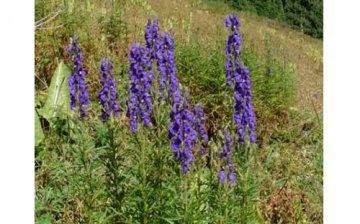Aconite plant - a poisonous inhabitant of the garden
Very often on the side of the road you can find a plant with long peduncles of violet, pink or white flowers. Many lovers of fresh flowers stop and collect bouquets of these beauties. But in no case should this be done, because this is an aconite plant, which is known for its poisonous properties. In addition, a cut plant cannot be without water for a long time and therefore very often dies before it is placed in a vase.
The aconite plant can also serve as an excellent decorative flower in any garden. But during the cultivation of aconite, special attention should be paid to the soil in which it grows. It should pass water and air well, be slightly acidic and slightly alkaline. In care, the aconite plant is quite unpretentious, because it grows without problems in natural conditions, which means that in personal plots, care for aconite can be left to nature.
When choosing a place in the garden, the aconite should be given a bright place or partial shade. The plant will have to be watered only in dry times, although aconite can do without additional watering, since it has a very developed root system.
Despite its poisonous qualities, the aconite plant is widely used in both traditional medicine and folk medicine. Most often, the plant and preparations with aconite in the composition are prescribed for neuralgia, gout, sciatica. it is used for high fever and colds, for homeopathic treatment and also for getting rid of insomnia, depressed mood and inflammation of the gastrointestinal tract.



